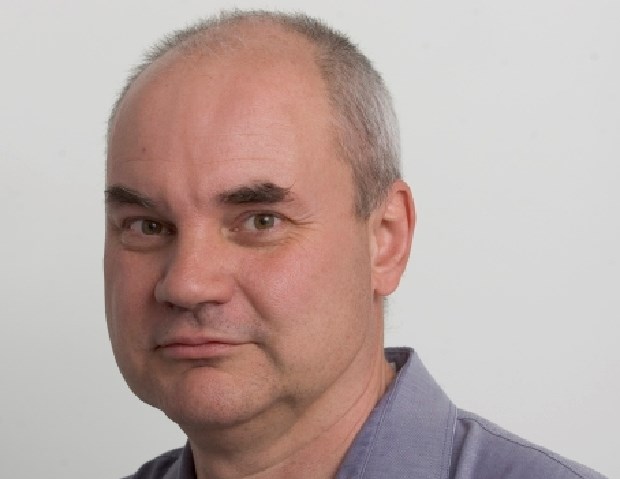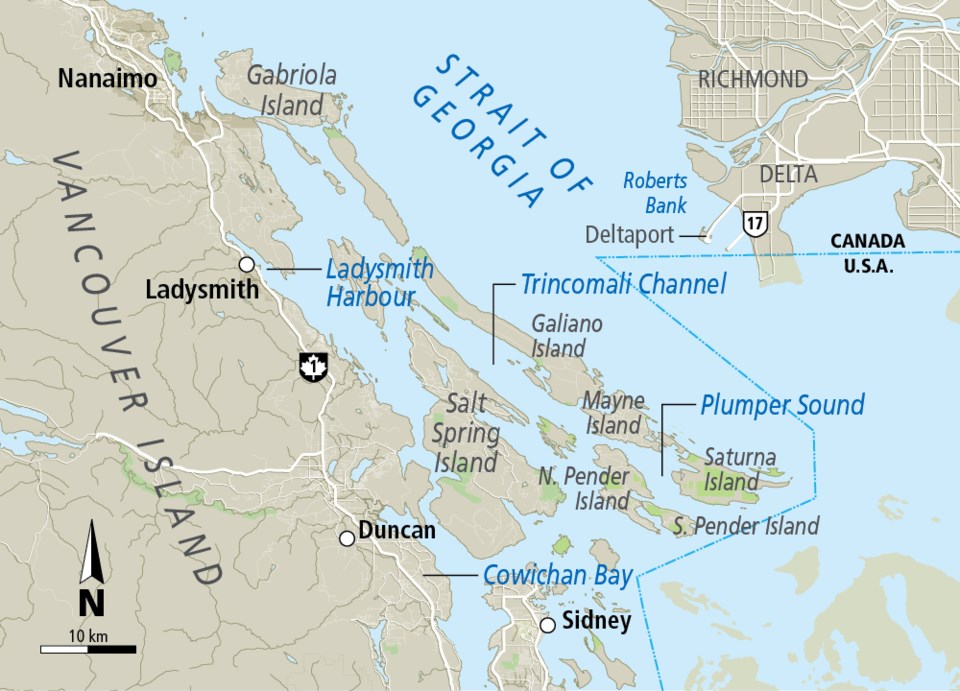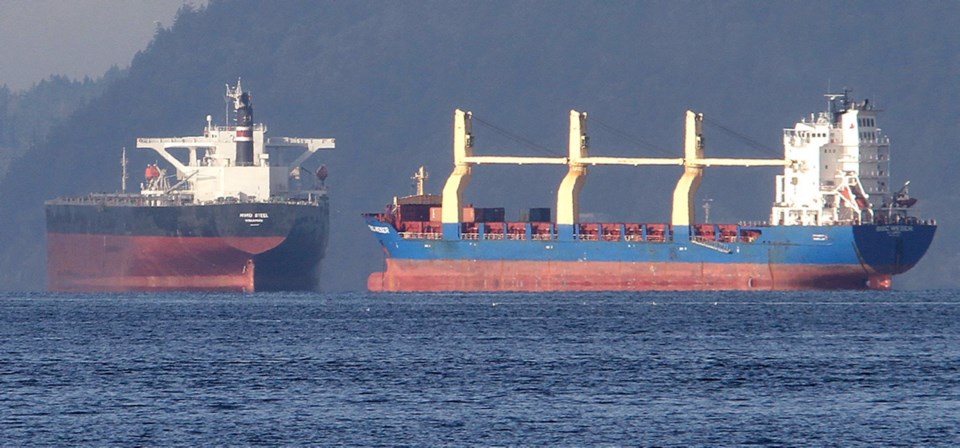 A sea battle is raging off Gabriola Island. On one side, the commercial shipping sector, which is eyeing the island’s northeast coast as overflow parking for the port of Vancouver.
A sea battle is raging off Gabriola Island. On one side, the commercial shipping sector, which is eyeing the island’s northeast coast as overflow parking for the port of Vancouver.
On the other, island residents who don’t want 300-metre-long freighters plunked outside their picture windows, ruining their view and — they fear — the environment.
That’s the issue on a micro level. More broadly, though, there’s the question of where our little Pacific paradise fits into the global supermarket.
Vancouver is, based on the tonnage it handles, the third-largest port in North America. You can see that in the thousands of freighters that pass Victoria each year, all that grain bound for Asia and all those iPhones heading to your pocket.
When a ship’s assigned berth — at the Deltaport container terminal, say, or the Roberts Bank coal facility — is full, or when its cargo isn’t ready for loading, the vessel will wait at an approved anchorage until it’s time to dock. Some of those anchorages are on our side of the strait — Ladysmith, Cowichan Bay, Trincomali Channel and Plumper Sound, the latter being between Saturna and Pender islands. The Nanaimo port authority has a half-dozen anchorages, too.
(On the relatively rare occasion when a big cargo ship is anchored off Esquimalt, it’s for a specific reason; for example, vessels travelling from areas infested with gypsy moths can be held there until cleared by an inspector.)
A few years ago, as traffic picked up, the authorities began scouting for new anchorages. It’s not that easy to find a good site, as the ocean floor can’t be so deep or so steep that it won’t hold an anchor.
The Pacific Pilotage Authority identified five potential anchorages off Gabriola. It has ordered an environmental assessment that is hoped to be complete by mid-April. Then, perhaps in August, will come a public consultation process before a final recommendation is made.
Whoa, said the neighbours. This idea is myopic, isn’t taking in everyone else’s needs. The area in question is prime sportfishing and recreational boating territory, critical to sea life and with potential for eco-disaster.
“The northeast coast of Gabriola Island frequently experiences onshore winds of 38-60 kilometres an hour,” wrote the Gabriola Against Freighter Anchorage grassroots group on its website. “If a single ship were to drag anchor and ground, or spill fuel while bunkering, the resulting oil spill would rapidly drift onto the coastline and destroy shore and marine ecosystems.”
The group argues the current environmental study is too limited, so has asked Transport Minister Marc Garneau to order a more rigorous assessment under federal law.
It also argues that even as the search for five more anchorages in the southern Gulf Islands continues, the need has eased as the number of freighters has dropped in the past couple of years. The pilotage authority confirmed a slow but steady drop in the number of ship visits, not so much because of declining trade but because the freighters themselves are growing bigger and can carry more goods.
But it’s the growth in the size of ships that has been a factor in the search for anchorages that can handle them. Another factor has been grumbling that has pushed ships away from existing sites.
“While some [Gulf Islands] anchorage locations have become unusable due to the growth in ship sizes, other locations have come to cause social concerns for nearby residents,” read a notice from the pilotage authority to shipping agents last May. In consequence, the number of anchorages was cut from eight to six in Cowichan Bay and seven to six in Ladysmith. Other anchorages have been moved farther offshore.

For some, the issue goes beyond whether the ships should, like an ugly dog (or unwanted sewage plant) be shooed from place to place. Canadian music legend Bill Henderson, writing to the TC from Salt Spring Island, contrasted being a kid fishing for shiners under the dock at Yellow Point 60 years ago, when “there were huge ling cod and there was peace and quiet for orcas and little kids,” with today.
“Now, with the proposed Kinder Morgan pipeline twinning to Burnaby bringing us up to 30 tankers a month instead of six, now with huge increases in dirty coal planned to cross these waters due to the approved Fraser Surrey Docks expansion, now with the big push for LNG shipping from Bamberton and Woodfibre, now with all this freighter traffic coming down the pipe, the Salish Sea will indeed be reduced to an industrial corridor,” Henderson wrote. Citing climate change and wasteful consumerism, he has lent his name to the Gabriola fight.
Others argue that this ship has already sailed. We’re in a global, integrated marketplace, with everybody trading with everybody, and there’s no going back. That means, like it or not, our marine highway isn’t going to revert to a country road. The question isn’t whether those massive ships will keep coming, but where they’re going to park.



